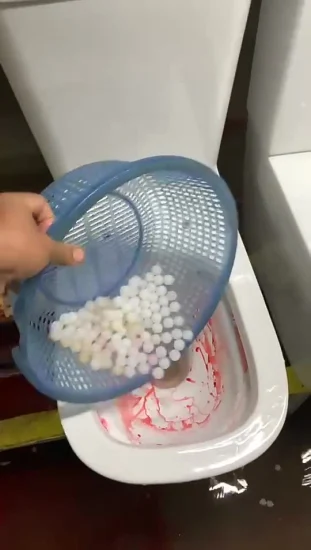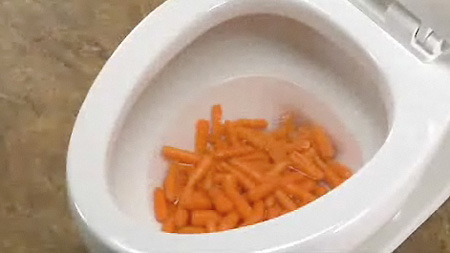Is it Sensible to Flush Food in the Toilet?
Is it Sensible to Flush Food in the Toilet?
Blog Article
On this page on the next paragraphs you might get lots of excellent information and facts concerning What Can Happen If You Flush Food Down the Toilet?.

Intro
Lots of people are often confronted with the issue of what to do with food waste, particularly when it concerns leftovers or scraps. One usual question that emerges is whether it's fine to flush food down the toilet. In this post, we'll explore the reasons that people could consider flushing food, the consequences of doing so, and alternate techniques for proper disposal.
Reasons why individuals might take into consideration flushing food
Absence of recognition
Some individuals may not know the prospective harm brought on by flushing food down the commode. They may incorrectly think that it's a safe method.
Benefit
Flushing food down the toilet may feel like a quick and very easy remedy to disposing of undesirable scraps, particularly when there's no nearby trash can readily available.
Idleness
In many cases, people may just select to flush food out of large laziness, without considering the effects of their activities.
Repercussions of flushing food down the toilet
Ecological influence
Food waste that ends up in rivers can contribute to pollution and harm water environments. Furthermore, the water used to purge food can strain water resources.
Plumbing issues
Purging food can lead to clogged pipelines and drains pipes, triggering pricey pipes repair work and inconveniences.
Types of food that must not be flushed
Coarse foods
Foods with fibrous appearances such as celery or corn husks can obtain entangled in pipelines and cause obstructions.
Starchy foods
Starchy foods like pasta and rice can absorb water and swell, causing obstructions in pipelines.
Oils and fats
Greasy foods like bacon or cooking oils need to never be flushed down the commode as they can solidify and cause obstructions.
Correct disposal methods for food waste
Making use of a garbage disposal
For homes outfitted with garbage disposals, food scraps can be ground up and flushed through the plumbing system. However, not all foods are suitable for disposal in this way.
Recycling
Particular food product packaging materials can be reused, reducing waste and reducing ecological influence.
Composting
Composting is an environmentally friendly method to get rid of food waste. Organic products can be composted and utilized to enrich dirt for horticulture.
The significance of proper waste management
Minimizing ecological injury
Proper waste monitoring methods, such as composting and recycling, help lessen pollution and maintain natural resources for future generations.
Securing pipes systems
By staying clear of the practice of flushing food down the bathroom, home owners can avoid costly pipes repair work and maintain the integrity of their pipes systems.
Final thought
Finally, while it may be alluring to flush food down the commode for ease, it's important to understand the possible effects of this activity. By embracing correct waste administration techniques and throwing away food waste responsibly, people can contribute to healthier plumbing systems and a cleaner setting for all.
FLUSH FOOD DOWN THE TOILET?
FLUSHING FOOD CAN CAUSE BLOCKED DRAINS IN YOUR HOME
All of the plumbing fixtures in your home are connected to the same sewer pipe outside of your home. This outdoor sewer pipe is responsible for transporting all the wastewater from your home to the Council sewer mains. Even small pieces of food that go down the kitchen sink can cause problems for your sewer. It should therefore be obvious that flushing larger bits of food, such as meat, risks a clog in either the toilet itself or the sewer pipes. Flushing greasy food is even more problematic because oil coagulates when it cools, coating the interior lining of your pipes.
THE TOILET IS NOT A BIN
Food isn’t the only thing that people shouldn’t be flushing down the toilet. People use the toilet to dispose of all kinds of things such as tampons, makeup wipes, dental floss, kitty litter and even underwear. Water goes to great lengths to educate residents about the high costs and stress placed on wastewater treatment systems simply from people flushing the wrong stuff down the toilet. It costs taxpayers millions of dollars each year, and homeowners thousands in blocked drain repairs.
FLUSHING FOOD IS A WASTE OF WATER
Flushing food is a waste of our most precious resource - water. In June this year Level 1 water restrictions were introduced to protect water supply from drought conditions. Much of New South Wales continues to be affected by prolonged drought with recent figures revealing up to 97 per cent of the state remains in drought. Depending on whether you have a single or dual flush toilet, every single flush uses between five and 11 litres of water. In the current climate this is a huge amount of water to be wasting on flushing food that should be placed in the bin (or better yet, the compost).
https://www.jabplumbingsolutions.com.au/blog/can-you-flush-food-down-the-toilet

Hopefully you enjoyed our topic about Flushing Food Down the Toilet?. Thanks so much for finding the time to read through our blog. Liked our write up? Please share it. Let another person check it out. I praise you for your time. Kindly check our website back soon.
View Website Report this page